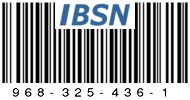
He asistido a la Conferencia celebrada en Tilton (New Hampshire, USA) invitado por la organización, en este caso la investigadora Elizabeth Baldwin como chair y John Fellman como vicechair. Al final la conferencia la Dra. Baldwin me dió las gracias por la aportación constructiva al debate dentro de la conferencia, siempre muy animada en este sentido. Los materiales y asistentes a la conferencia son confidenciales, aunque es posible conversar con investigadores de gran relevancia en la postcosecha de frutas. Allí presentamos un poster sobre nuestras últimas investigaciones en calidad orientadea a mejora genética del fruto de melón. Un resumen que no será publicado salvo aquí aparece abajo. Esta acción fue cofinanciada por la Fundación Séneca ‐ Agencia de Ciencia y Tecnología de la Región de Murcia en el marco del II PCTRM 2007‐10 (bolsa de viaje para asistencia a congresos científicos) con 1200 euros (menos el 15% de IRPF, claro).
Fernández-Trujillo, Dos-Santos, N., Chaparro-Torres, L.A., Llanos, L., Obando-Ulloa, J.M., Alarcón, A.L., Martínez, J.A., Bueso, M.C., Jowkar, M.M., Hernández, M.S., Cañizares, J., Jiménez, A., Rodríguez-Arcos, R., Saladié, M., Monforte, A.J., Garcia-Mas, J. 2010. New applications of near-isogenic lines of melons to study and improve postharvest fruit quality. Conferencia Gordon Postharvest physiology. Postharvest quality and sustainability: Genomics to consumer experience. Tilton School, Tilton, New Hampshire, USA. 27 Junio-1 Julio.
Abstract.
During the last 6 years we have been working with near-isogenic lines (NILs) of melon and subNILs. The near isogenic line collection of melon fruit containing exotic alleles from PI161375 showed beneficial effects on quality traits of interest for postharvest purposes. In the previous conference we showed most of the potential uses that we have been found to study postharvest fruit quality and physiology, postharvest disorders, etc. The new findings to be presented here include mapping of QTLs with potential usefulness to improve postharvest fruit quality and to gain knowledge on climacteric behavior and storage disorders, the genetic basis of aroma biosynthesis, the link between aroma and texture, QTLs for compounds of nutritional interest, etc. We also performed microarray analysis and preliminary data will be presented here and used these lines to study fruit softening, the perception of quality by consumer, fresh-cut behavior, etc.
Keywords: Cucumis melo, fruit quality traits, physiological disorders, nutritional content, texture, chilling injury, climacteric behavior, microarray analysis.
También y en el marco de nuestro trabajo en frutas tropicales se presentó el poster:
Hernández, M.S., Barrera, J., Carrillo, M., Martínez, O., Fernández-Trujillo, J.P. 2010. New opportunities in postharvest handling of neglected tropical fruit. Conferencia Gordon Postharvest physiology. Postharvest quality and sustainability: Genomics to consumer experience. Tilton School, New Hampshire, USA.
En la foto el salón donde se celebraban las conferencias.


No hay comentarios:
Publicar un comentario